I'm using the POT package to carry out certain calculations in R. The output of the analysis is stored in a object of class uvtop. Now, I'd like to export the result of the analysis, rather than just plot it within an R window.
Here it goes an example, using sample data from this package.
data(ardieres)
events1 <- clust(ardieres, u = 6, tim.cond = 8/365, clust.max = TRUE)
npy <- length(events1[,"obs"]) / (diff(range(ardieres[,"time"], na.rm
= TRUE)) - diff(ardieres[c(20945,20947),"time"]))
mle <- fitgpd(events1[,"obs"], thresh = 6, est = "mle")
par(mfrow=c(2,2))
plot(mle, npy = npy)
With this, I get the image below:

OK, but what I want is to export the necessary data to reproduce the Return Level Plot (bottom right panel) somewhere else, i.e. the values represented by circles, the solid and both dashed lines.
